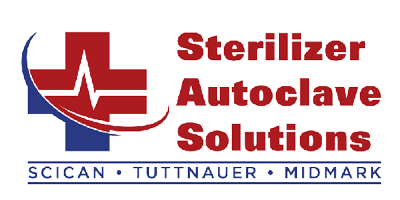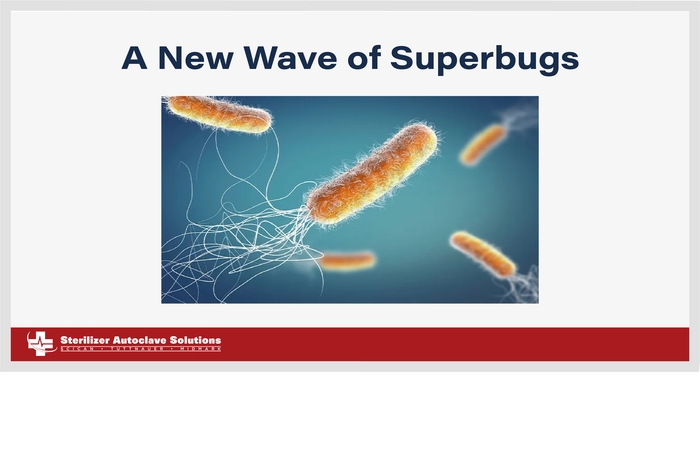A New Wave of Superbugs
Quaternary ammonium compounds, also known as quats, are something we’ve lightly touched on in the past. When talking about the effects of the odor and fumes of cleaning products. In that case, we used the example of the residue left by certain types of wet wipes. The residue that can cause irritation to different parts of you in small amounts, but more harm with longer exposure. And that is the risk of working with strong cleaning chemicals of course, there’s no doubt about that. But recently, it seems that prolonged exposure to these types of compounds is possibly contributing to a new problem.
So in this article, we’d like to go over some recent news regarding the topic of infection control. And the impact that disinfectants are potentially having on a rise in “superbugs.” And as always, if you have questions about this or anything else, call us at 704-966-1650. With that, let’s go over some things that are important to know.
Superbugs and Quats
Before we get into what’s going on in the industry, it’s important to know key details about the subject. That being “superbugs” and the quats mentioned before. Let’s go over what each of those are.
Quaternary Disinfectants
Quats, or quaternary disinfectants, they’re a group of chemicals that have various purposes in their use. Things like active ingredients in disinfectants and sanitizers for one. But they can also be used for preservatives, surfactants, and antistatic agents. They’re highly effective in killing bacteria, fungi and viruses.
However, there’s a glaring problem when dealing with products where the active ingredients are quats. They have to be strong enough to eliminate bacteria, and wile they’re very effective at doing so, they can trigger harmful reactions. The odor and residue they can produce can become a problem for some. They can cause major health issues like allergic reactions, hormone-disruptions, and irritation of the airways that can trigger asthmatic symptoms or an attack.
Superbugs
Superbugs are bacteria, or strains of bacteria, that are resistant to several types of antibiotics. Usually resistant to them types of antibiotics designed to kill that type of bacteria. But how does that happen?
They’re caused by misuse of antibiotics. The bacteria becomes overexposed in wrongful attempts to get rid of it. The bacteria then begins to mutate in an attempt to survive. If it’s not obvious, that’s very bad. According to the CDC, these superbugs infect more than 2 million people nationwide per year. And they’ve killed in the range of 23,000 of those 2 million.
Recently, though, they’ve been on the rise, and overexposure has had a major leading role in it.
The Rise of QACs Contributes to Increased Resistance Rates
The term “superbug” sounds almost like something from fiction, but the reality is anything but. They’re very dangerous, and they’re on the rise again. But why? Well, according to a review recently published by the American Chemical Society, QACs are the cause for concern. When the pandemic had first hit, the use of antibacterial disinfectants and similar products was on a huge upward spike. Everything was all about keeping everything disinfected and sanitized as to prevent the spread of the virus. That in itself was boosting the usage, but it wasn’t just how much, in some cases, it was also how it was being used.
Medpage Today mentioned the improper usage of QACs on surfaces that didn’t need them. Bringing up that, along with the overzealous use of disinfectants on every normal surface, people were using them on things like pillows and furniture, clothing articles, the like. Surfaces that these products were NOT made to cover and protect for various reasons. But the trends that popped up during COVID’s wave brought along many concerns like this.
The scientific review we mentioned before had reported evidence in healthcare facilities of overexposure to QACs. Adverse effects that were rearing their heads due to overuse. The review shows evidence of: “dermal and respiratory effects, developmental and reproductive toxicity, and disruption of metabolic function associated with exposure to QACs.” And the review continues to say: “In addition, the review demonstrates that concentrations of QACs in the environment are already approaching levels known to be toxic to aquatic organisms and they are now detected in human blood and breast milk.”
The overuse of these products can be detrimental if not used properly. And the spread of antimicrobial resistance is not something you want to be contributing to. If more of these superbugs appear, then more and more disinfectant products will become useless against them. Then we’ll have less and less to combat them with. Luckily, there’s steps being taken in the medical community to reduce the overuse of QACs and other products that raise these concerns. Although these steps are crucial, without a true understanding of these compounds, it’s harder to proceed. There are many steps that can be taken now however, and it starts with finding a solution in an alternative to the harmful products.
There is a Solution
Thankfully with the constant evolution of the medical industry, there is a solution. See, if products that utilize quaternary compounds are what contribute to stronger bacteria, then switch to a product that doesn’t use quats. There are still incredible ways to sterilize your working environment without the use of harsh chemical compounds.
For example, hydrogen peroxide is a major game changer. And an effective sterilization solution for many reasons. It can decontaminate any germ-filled surface in record time, just like the competition. But thanks to its makeup being oxygen and water, once its job is done, it breaks down into said elements. Leaving behind no harsh chemical residue on your surface, and no harmful fumes in the air. For that reason, products that utilize hydrogen peroxide as a main ingredient are non-toxic. And in turn, also makes them eco-friendly. So far, hydrogen peroxide is taking a big win in this scenario. So if you want to prevent the rise of mutated superbugs, then it’s time to make the switch to something far safer. And there’s one product that can help you start your new journey away from quats.
Optim1 to Eliminate Superbugs
Optim1 Wipes can help solve all of your mutated bacteria problems. Able to cover double the surface area of normal wipes with half the amount. Optim1 can not only take on TB virus and bacterial pathogens in just 1 minute. But they can take on enveloped and non-enveloped viruses, as well as fungi, in half that time. A whopping 30 seconds. And as standard, it can fight off the COVID-19 virus with just 1 minute of contact time. Optim1 has many other benefits as well which include:
- Removes organic debris while disinfecting, saving you time and money.
- Fast Broad-Spectrum Disinfectant
- 1 minute contact time ensures compliance, saving you time and money
- In the lowest EPA toxicity category, category IV
- No GHS hazard pictograms, signal words or statements required
- No VOCs (volatile organic compounds)
- Active ingredient, Hydrogen Peroxide, breaks down into water and oxygen
- No active residues reduce environmental impact
- ½ as many wipes as the leading competitor are needed to keep your surface wet long enough to achieve disinfection
Final Thoughts
The current contribution to the rise of more resilient bacteria may not be visible to some, but it’s happening more than you realize. Thankfully, the medical community is fighting back now in any way they can. Superbugs are very dangerous, and the more there are, the less effective our disinfectants will be. And the overuse of disinfectant products via trends or just general ignorance is something that has to change. While it’s difficult to get this new plan into action, there are things you can do now.
Switching to disinfectant products that can handle the same tasks as your regular QACs, with a safer formula. Take hydrogen peroxide for example. Leaves no residue, but can still fight off bacteria like the best. And with Optim1 wipes using hydrogen peroxide as an active ingredient, they can tackle the same typesof viruses and bacteria, including COVID. All this in half the amount of wipes, and nearly a quarter of the time.
So it’s time to fight back against the rise in superbugs, the right way. If you have any questions about this or anything else you can call us. Or you can find our programs using the links below.
As always if you have any questions about this product or anything else please feel free to contact us and take advantage of our “FREE TECH SUPPORT.”
We also offer FREE VIRTUAL TECH SUPPORT to “See and Talk” with a “Real Time Live Technician” for any problems you may be in need of help with.
You can also use our “FREE MAINTENANCE PROGRAM”. Take the guesswork and worrying about what unit is due for maintenance and which maintenance cycle it is time for. We will keep track of all your autoclaves and let you know when it’s time for anything.


